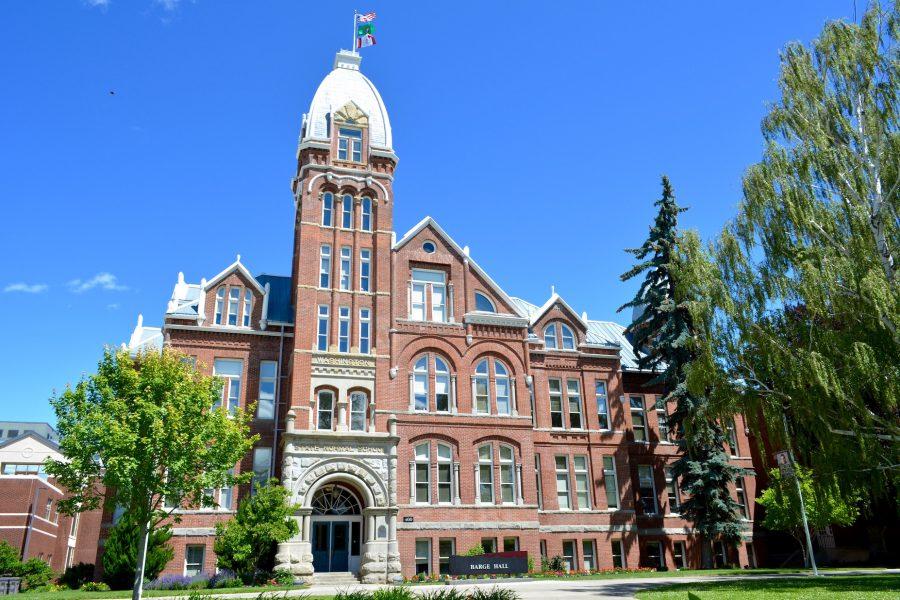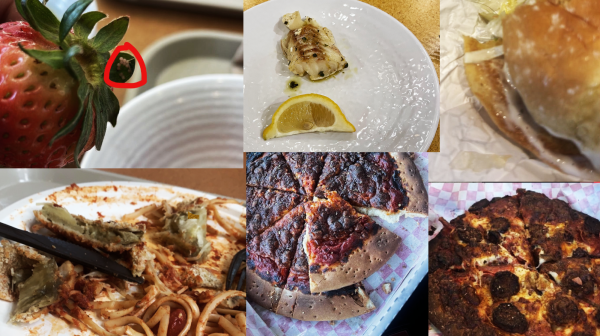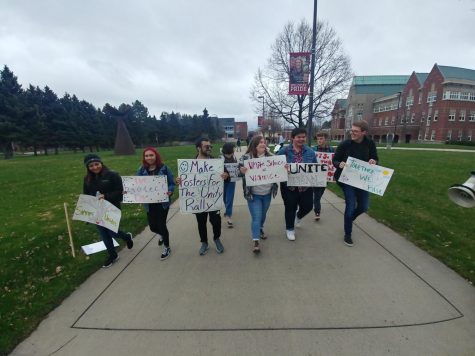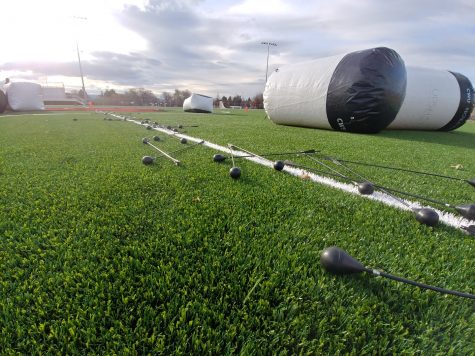President Gaudino reaches fifth year of agreement; set to receive $500,000 incentive bonus
The first contract that Central Washington University President James L. Gaudino signed when coming to the university in 2009 was supposed to end after 2011, but a key change occurred in his contract in 2011. That key change promised him $500,000 if he stayed for another five years, and that bonus is now headed his way.
On top of that, the university’s Board of Trustees on Thursday evaluated Gaudino and agreed to boost his annual salary to $375,000 from $304,674, a 23.1 percent increase.
This makes him the highest-paid president of the three regional, master’s granting universities. Western Washington University’s new president is making $365,000 a year, and Eastern Washington University’s president makes $312,090.
The Board of Trustees also agreed to give him additional annual cash payments for each year he stays beyond this Aug. 1. He’d first get $25,000 next August, then each payment over the next four years would increase by $25,000, for a total of $375,000 in cash bonuses over the five-year contract.
His first compensation contract in 2009 included an annual base salary of $290,000 and a monthly allowance of $1,000.
According to Linda Schactler, chief of staff to the president and vice president of public affairs, the changes in the contract in 2011 required Gaudino to serve through July 31, 2016, which is this Sunday.
In 2011, the Board of Trustees decided that they would use a financial incentive program that was designed to retain President Gaudino. The incentive: the $500,00 bonus that he would earn after serving another five years.
According to Schactler, the money for Gaudino’s $500,000 retention bonus is coming from interest earnings from the university’s investments. Essentially it breaks down to using money that would otherwise have been reinvested elsewhere. As an example? Schactler said if the university budgets $100 for a project and only spends $90, then the $10 that is left over can be invested until there is a better use for it.
According to Schactler, back in 2013, the Board of Trustees increased his base salary to$ 298,700.16, which reflected a state-authorized 3 percent increase for all administrative employees. It also amended his future contract so that future increases would not require the Board of Trustee’s approval. Basically, he receives the same raises? that other exempt employees get.
In 2015, the Board of Trustees decided to extend the term of his contract to July 31, 2019, and on July 1, 2015 an across-the-board agreement of a 2 percent increase for a cost-of-living adjustment was approved for all employees. This caused Gaudino’s base salary to then increase to $304,674.52.
Schactler also says that the money is coming from vendor rebates as well. This means that when businesses provide their products to CWU (to be sold on campus), if more products are sold than expected, some of the funds are returned to the university as rebates.
According to Keith Thompson, the chairman of the Board of Trustees, one of the rebates is coming from Coca-Cola. Coca-Cola provides the soft drink products for campus and has been paying a rebate for a number of years that they choose to pay from their profits from products sold on campus.
According to charts provided by Schactler, Gaudino’s yearly salary this past year was $304,674, compared to Eastern Washington University’s (EWU) current yearly salary of $312,090. In comparison, Evergreen State College– which is not a university based on the fact that it only has 5,000 students–the current annual salary is $300,000. Western Washington University’s new president has a yearly salary is $365,000.
According to Thompson, President Gaudino had been one of the lowest paid university presidents in the state of Washington.
According to the same charts provided by Schactler, when it comes to comparing retention incentives and deferred compensation back in 2012, CWU had a retention incentive of $100,000. Since 2013 it has increased $25,000 a year until 2016 when it reached $150,000, with a lump sum of $500,000 at 3 percent interest.
In comparison, EWU’s deferred compensation was $5,000, while Evergreen State College provides an annual contribution to a 401 (K) plan in the amount of $50,000. Western Washington University is going to have a $5,000 increase (starting at $20,000) over the next five years, with a 3 percent interest per annum.
According to Thompson, the reasons for keeping Gaudino and raising his pay are because of what he has done to improve Central. In regards to whether or not President Gaudino intends to stay after his five-year term, Thompson has stated that President Gaudino would love to stay and continue to work at Central for now.
*This story has been updated to correct the year of the original contract from 2009 to 2011.










Paul Stayback • Aug 24, 2016 at 2:31 pm
When President Gaudino was first authorized the $500K bonus, I was a member of the ASCWU-BOD. Myself and my fellow board members were appalled at the sum considering the economic difficulties at the time, and the University’s Board of Trustees did not know at the time where the money would come from. At the time of the initial agreement, it was stated that to bring in a new president, should Gaudino leave, would require a significant rise in pay. This coincided with CWU’s attempts to tap the pool of S&A funds that my board, and subsequent boards, fought so hard to prevent.
However, President Gaudino has piloted CWU through some tough waters and made many changes to the structures within CWU. Some of have been received well, others not. However, with CWU coming out of a tumultuous financial period, and seeing the growth it has, it is a hard argument to make that Gaudino has not earned his pay.
So what if he is the top paid of the state’s regional institutions? CWU is growing in enrollment, performance, and reputation. Could fat be cut at CWU? You bet. Could money go elsewhere to improve services and processes? it always can, but President Gaudino has done a good job, and his retention at CWU only benefits CWU, its students, and the state.